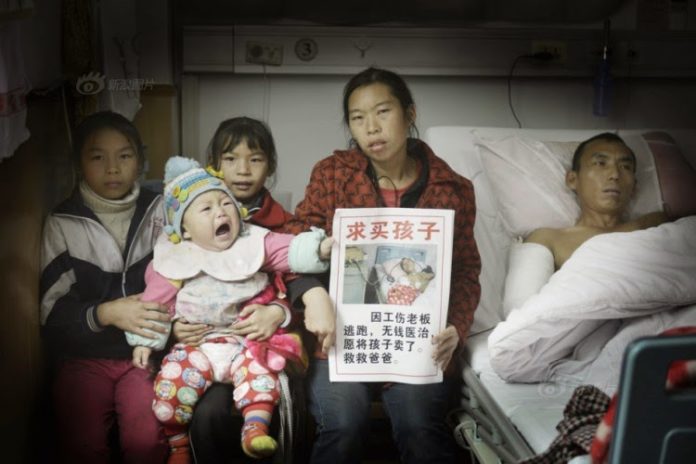
Rural migrant sells baby to pay medical bills
A rural migrant women from Sichuan has been trying to sell her baby on the street of Fuzhou to raise money to pay medical bills for the baby’s father. Police were called when the women displayed a sign saying “Boss fled after industrial accident and we don’t have the money for treatment; I’m willing to sell my child to save her father.” The woman said she had already paid Y7000 in medical bills for treatment of her husband who had injured himself after falling from a construction site. Some sympathetic passers-by gave the women some money before she was persuaded to end her ‘sale.’
Beijing ambulances used for non-urgent cases
Ambulance services in Beijing are overstretched because 80% of cases they transport are non-urgent and do not need to attend the emergency department, a survey has found. Only 20% of the people brought in to hospital by ambulances had life-threatening conditions, according to a report from the Beijing’s Health Planning Commission, which found that most of the ambulance patients could be treated in the outpatients department. The commission has suggested that patients are triaged before being taken to hospital as many critically ill patients are left without transport while ambulances are dealing with non-urgent calls.
Avian flu returns more lethal
The severity of H7N9 avian flu in China increased with the “second wave” last winter and the virus may return in an even more virulent and lethal form this winter, researchers have warned. The lethality of the H7N9 virus increased by 48% from the first wave in 2013 to the second wave in 2014, according to Dr Li Feng and colleagues at the Key Laboratory of Surveillance and Early-warning on Infectious Disease at the China CDC, Beijing. In the latter part of the first wave the death rate among hospitalised patients was 17% for young people under 60 and 42% for people over 60. In the second epidemic the death rate was 36% in people under 60 years, and 59% in people aged 60 years or above.
“If another epidemic of human infections with influenza A(H7N9) virus occurs in the winter of 2014/15, proactive control measures on the poultry-human interface may be preferable to reactive measures,” the researchers suggested.
